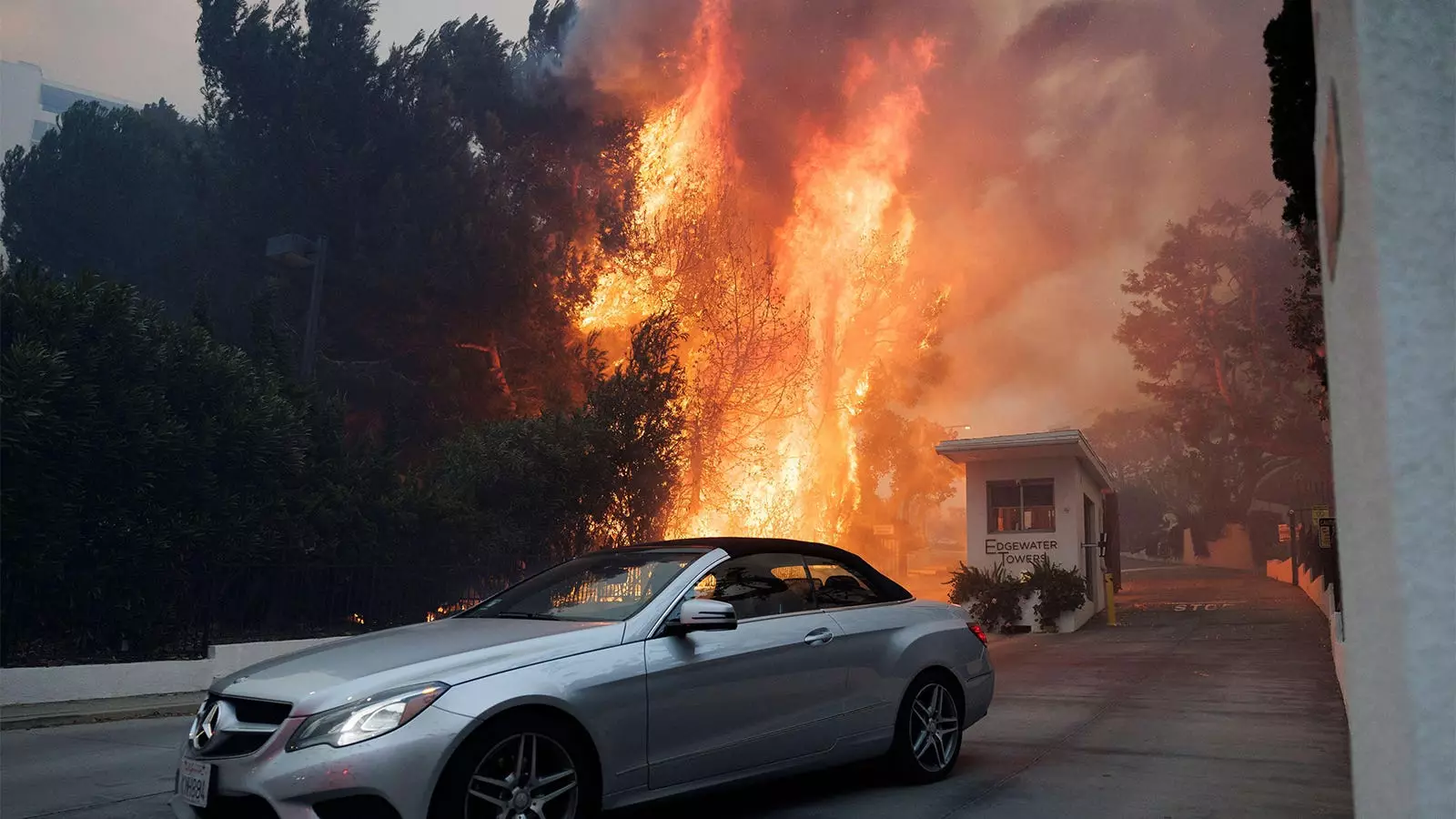Last Friday night, as I navigated the desolate lanes of the 405 freeway in Los Angeles, I was unprepared for the uncanny experience that awaited me. The freeway, normally choked with cars, was almost eerily vacant. Above, the sky was a masterpiece of chaos, with the smoke from the recent Palisades fire creating an uncanny canvas that resembled the surreal art of Salvador Dali. The smoke billowed bizarrely, twisting and turning like a cosmic accusation against humanity, suggesting that we are not just witnesses but, in fact, participants in this calamity. As I traversed through the Sepulveda Pass, ash fell like snow around me, enveloping my vehicle, while distant sounds of helicopters reverberated across the landscape, heightening the sense of impending disaster.
The San Fernando Valley came into view along the 101 Freeway, where the distant hills flared in eerie shades of red, reminiscent of a waking nightmare rather than a natural phenomenon. The once picturesque scenery of Los Angeles was now an unsettling mix of beauty and devastation, a testament to the chaotic forces of nature unleashed by climate change. This wildfire bears little resemblance to any before it; it straddles the urban-wildland interface and impacts countless man-made structures. The implications of this conflagration extend far beyond the flickering flames; it introduces a toxic medley of pollutants into the air, including fine particulates like PM2.5, and dangerous chemicals from burning plastics and fire retardants. This is not merely a fire—this is a chemical assault on public health.
As these toxic substances permeate the atmosphere, the risk to first responders and nearby communities escalates exponentially. We are already observing a rise in medical emergencies related to inhalational injuries among individuals who either underestimate or are unprepared for the hazardous conditions. Furthermore, the long-lasting repercussions of this environmental calamity are likely to manifest as chronic health issues, akin to the aftermath experienced post-9/11. The specter of increased cancer risk looms ominously over those exposed, stirring fears that paralyze both first responders and local residents alike. Beyond the physical hazards, the psychological ramifications cannot be ignored. The trauma of losing homes and livelihoods will burden countless individuals, punctuating their lives with anxiety and post-traumatic stress disorders.
As someone immersed in the field of occupational and environmental medicine, I am acutely aware of the considerable work that lies ahead to address this crisis. Our training equips us to navigate the complexities of environmental disasters, and the current wildfire situation exemplifies this urgency. The invaluable lessons gleaned from past emergencies must now inform our collective response. During the COVID pandemic, we orchestrated strategies to preserve worker safety; similarly, we must deploy our expertise in addressing health risks associated with the current crisis.
Developing real-time environmental monitoring systems is imperative. These systems should collate essential data—air quality levels, pollutant concentrations, traffic patterns, and healthcare availability—into an intuitive resource that allows both emergency responders and the public to make informed decisions promptly.
The pressing need for occupational and environmental medicine specialists is undeniable. The dwindling number of accredited residency programs in the U.S. highlights a concerning trend; fewer practitioners are available to tackle the increasingly complex challenges we face in environmental health. With only 25 residency programs remaining in 2020, the effects of poor funding over the years are becoming disturbingly evident.
As we stand at this crossroads, we must galvanize efforts to expand this field. To forge resilient strategies that can be effectively scaled and ensure a future where cities do more than merely survive environmental disasters, we must promote environmental independence at all levels of governance and society.
Los Angeles’ current plight serves as a sobering reminder of the ever-looming threats posed by climate change. Yet, through decisive action and innovative thinking, we can weave a different narrative. By harnessing technology, data, and the expertise of our medical professionals, we can pivot from mere survival to an empowered and harmonious existence alongside our environment.
In this pivotal moment, we have the opportunity to establish Los Angeles as a model for environmental innovation and resilience—a beacon of hope in a world increasingly defined by ecological uncertainty. The path forward will demand courage and a collaborative spirit, but the vision of a healthier, sustainable future lies bright on the horizon for those willing to pursue it.


Leave a Reply